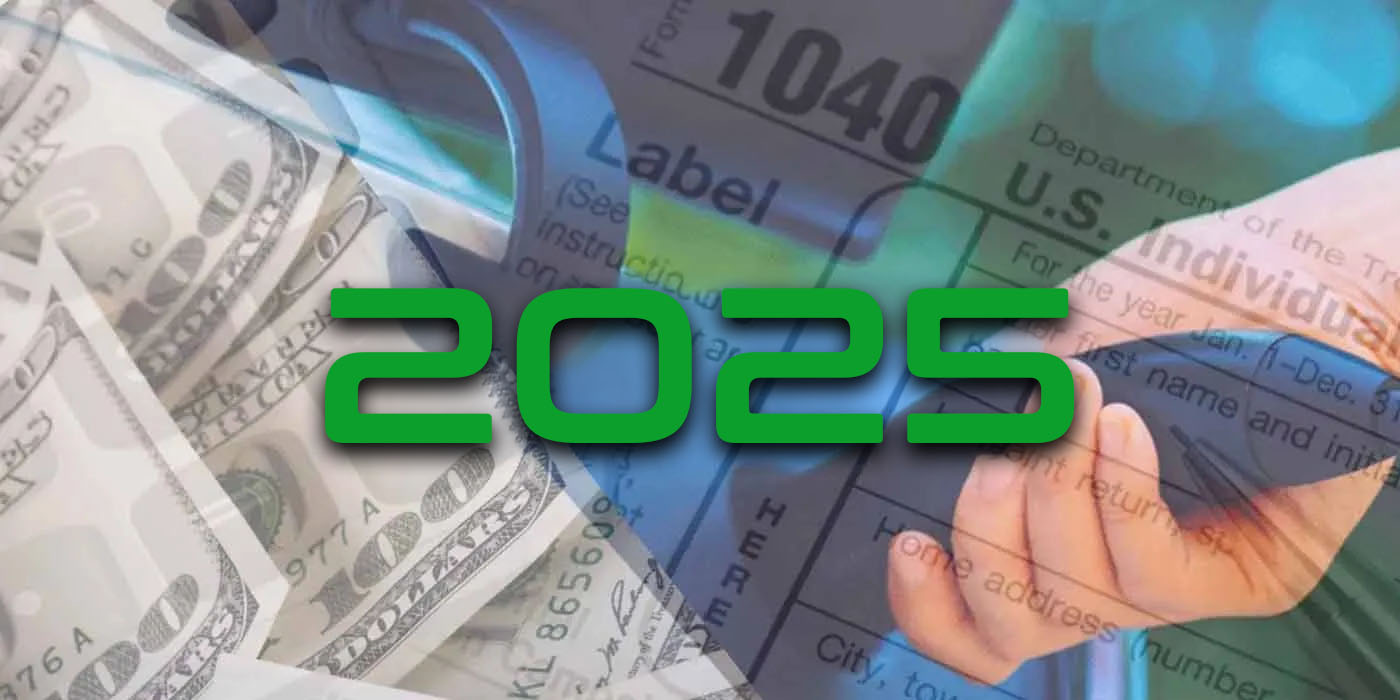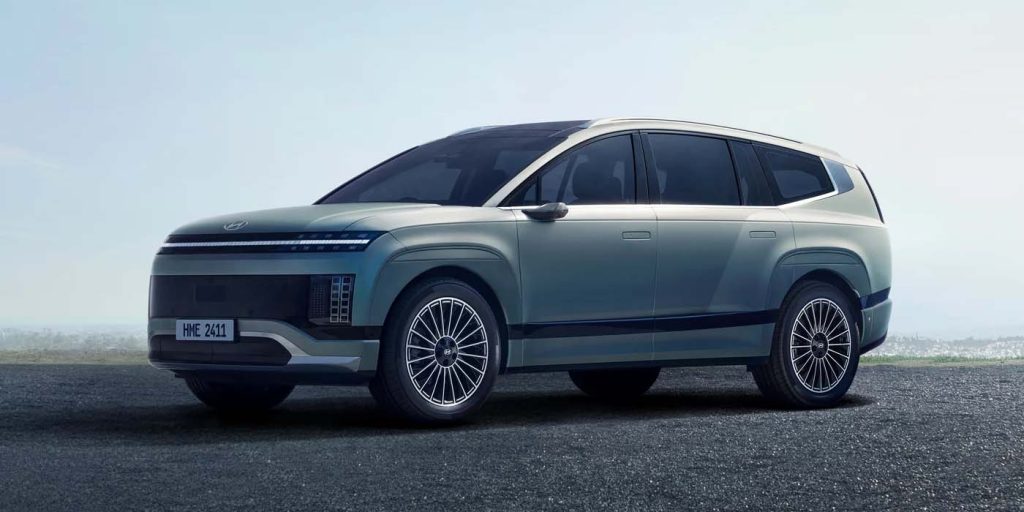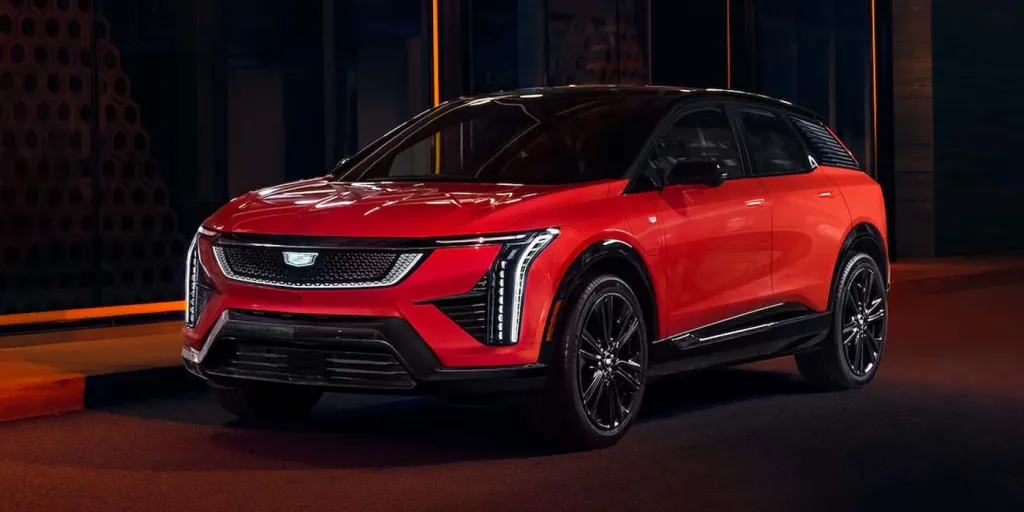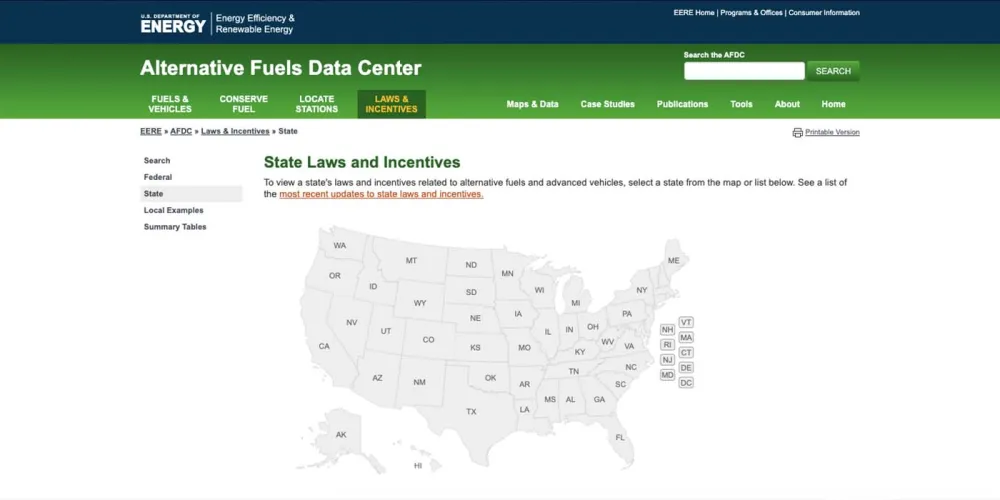
As sales of electric vehicles continue to grow in 2025, many new and prospective customers have questions about qualifying for a federal tax credit on EVs. Whether your vehicle qualifies or not is a simple yes or no question, but the amount you may qualify for varies by household due to a number of different factors. Luckily, we have compiled everything you need to know about tax credits for your new or current electric vehicle into one place.
Table of contents
How does a federal tax credit work for my EV?
The idea in theory is quite simple, per the IRS – “You may qualify for a credit up to $7,500 under Internal Revenue Code Section 30D if you buy a new, qualified plug-in EV or fuel cell electric vehicle (FCV). The Inflation Reduction Act of 2022 changed, but extended the terms for this credit for vehicles purchased between 2023 to 2032.
That said, you cannot simply go out and buy an electric vehicle and expect Uncle Sam to cut $7,500 off your taxes come April. In reality, the amount you qualify for is based on both your income tax as well as several specifications of the electric vehicle you purchase, including where it’s built. More on that below.
First, let’s take a second to truly understand how the Federal EV tax credit currently works.
How much is the federal tax credit?
First and foremost, it’s important to understand three little words the government slips in front of the $7,500 credit – “may” and “up to.” As in, you may qualify for up to $7,500 in federal tax credit for your electric vehicle. At first glance, this credit may sound like a simple flat rate, but that is unfortunately not the case.
For example, if you purchased a Tesla Model 3 and owed say, $3,500 in income tax for the year, then that is the federal tax credit you would receive. If you owed $10,000 in federal income tax, then you would qualify for the full $7,500 credit.
It’s important to note that any unused portion of the $7,500 is not available as a refund nor as a credit for next year’s taxes. Bummer.

Federal Tax Credits under the Inflation Reduction Act
The following terms were introduced by the Biden Administration in the summer of 2022 and went into effect on January 1, 2023:
- Federal tax credit for EVs will remain at $7,500
- The timeline to qualify is extended a decade from January 2023 to December 2032
- Tax credit cap for automakers after they hit 200,000 EVs sold is eliminated, making GM, Tesla, and Toyota once again eligible
- The language in the bill indicates that the tax credit could be implemented at the point of sale instead of on taxes at the end of the fiscal year
- That means you can get your credit up front at the dealer, but these terms may not kick in until 2024
- In order to get the full tax credit, the EV must be assembled in North America and…
- Two binary pieces separate the full $7,500 credit meaning the vehicle either qualifies for each piece of the credit or doesn’t
- $3,750 of the new credit is based upon the vehicle having at least 50% of its battery-critical minerals from North America or countries with a free trade agreement with the United States. This is a list of countries with free trade agreements with the US.
- The other $3,750 of the new credit is based on at least 50% of the battery components of the vehicle coming from the United States or countries with a free trade agreement with the US
- Note – these battery requirements have been updated as of May, 2024. More below.
- The 50% critical minerals requirement increases to 60% in 2025, 70% in 2026, 80% from 2027 onward.
- The 60% battery components requirement now stays as such through 2025, then increases to 70% in 2026, 80% in 2027, 90% in 2028 and 100% from 2029 onward.
- Beginning in 2025, any vehicle with battery minerals or components from a foreign entity of concern is excluded from the tax credit
- Qualifying EVs must also have a battery size of at least 7 kWh and a gross vehicle weight rating of less than 14,000 pounds
- A new federal tax credit of $4,000 for used EVs priced below $25k
- Subject to other requirements like lower annual income (see below)
- Revised credit applies to battery electric vehicles with an MSRP below $55,000
- Also includes zero-emission vans, SUVs, and trucks with MSRPs up to $80,000
- New credit also expands to commercial fleet customers
- Includes separate qualifications and limits
- The federal EV tax credit will be available to individuals reporting adjusted gross incomes of $150,000 or less, $225,000 for heads of households, or $300,000 for joint filers
- The new credit will also continue to apply to Plug-in Hybrid EVs (PHEVs) as long as they meet the same requirements outlined above
Revamped used electric vehicle tax credit
Used EVs also got revised terms that now offer a credit equal to 30% percent of the sale price (up to $4,000). That should help consumers like yourselves get some change back in your pocket at the end of the fiscal year. As long as you stick to these terms as outlined by the IRS.
To qualify as a customer, you must:
- Be an individual who bought the vehicle for use and not for resale
- Not be the original owner
- Not be claimed as a dependent on another person’s tax return
- Not have claimed another used clean vehicle credit in the three years before the EV purchase date
- Modified adjusted gross income must not exceed $75k for individuals, $112,500 for heads of households, and $150k for joint returns
For the used EV to qualify for federal tax credits, it must:
- Have a sale price of $25,000 or less
- Have a model year at least two years earlier than the calendar year when you buy it
- For example, a vehicle purchased in 2023 would need a model year of 2021 or older
- Not have already been transferred after August 16, 2022, to a qualified buyer
- Have a gross vehicle weight rating of less than 14,000 pounds
- Be an eligible FCV or plug-in EV with a battery capacity of at least 7 kilowatt hours (kWh)
- Be for use primarily in the United States
- You buy the vehicle from a dealer
- For qualified used EVs, the dealer reports the required information to you at the time of sale and to the IRS
- Purchaser must be an individual (no businesses) to qualify for used credit
- A used vehicle qualifies for tax credit only once in its lifetime
The IRS’ latest electric vehicle tax credit guidance (May May 2024)
In May 2024, the IRS shared its final rules for the federal tax credit program. The original rules required qualifying vehicles to be assembled in North America alongside gradually higher percentages of battery materials and components to be produced on the continent and in countries with free trade agreements with the US.
Following months of difficulties amongst automakers trying to become compliant to qualify, the US Treasury Department and IRS have relaxed some of those parameters, including the sourcing of graphite, electrolyte salts, binders, and additives… at least until 2027.
This news follows an October 2023 update that pertained to the transferring of credits. Per the IRS:
The Internal Revenue Service issued proposed regulations, Revenue Procedure 2023-33 (PDF) and frequently asked questions today for the transfer of new and previously owned clean vehicle credits from the taxpayer to an eligible entity for vehicles placed in service after Dec. 31, 2023.
This “transfer” is essentially the ability of a new EV buyer to give the tax credit to the dealer selling them their shiny new EV. In exchange, the dealer can give the equivalent “in cash or in the form of a partial payment or down payment.”
However, all the same eligibility criteria still apply even with a transfer, including the buyer having a federal tax burden.
The buyer must give the dealer all their tax information, which will then be submitted to the IRS. The dealer is not required to verify the information, and therefore, the disclosure falls on the buyer. All the other previous vehicle requirements, like MSRP limits, and for the buyers, like income limit requirements, apply here.
The only requirement that this update allows you to avoid is your tax burden. If, for some reason, you can afford to buy a new car and yet you happen to have a tax burden smaller than the full amount of tax credit you are eligible for, the IRS says that it won’t “recapture” the difference.
EVs that qualify for federal tax credits (Jan. 2025)
Per the IRS, the following EVs qualify for federal tax credits if purchases between January 1 and December 31, 2025.
NOTE: Not every version of the models listed below will necessarily qualify. Please check with your local dealer/seller to determine the eligibility of your specific EV.
Battery Electric Vehicles (BEVs)
| Make and Model | MSRP Limit | Tax Credit Amount |
| ACURA | ||
| ZDX (2024-2025) | $80,000 | Up to $7,500 |
| CADILLAC (GM) | ||
| LYRIQ (Luxury and Sport Trims) (2024-2025) | $80,000 | Up to $7,500 |
| OPTIQ (2025) | $80,000 | Up to $7,500 |
| CHEVROLET (GM) | ||
| Blazer EV (LT, RS, and SS Models) (2024-2025) | $80,000 | Up to $7,500 |
| Equinox EV (LT & RS Models) (2024-2025) | $80,000 | Up to $7,500 |
| Silverado EV (LT Model) (2025) | $80,000 | Up to $7,500 |
| FORD | ||
| F-150 Lightning (Flash Trim) (2022-2025) | $80,000 | Up to $7,500 |
| F-150 Lightning (Lariat Trim) (2022-2025) | $80,000 | Up to $7,500 |
| F-150 Lightning (XLT Trim) (2022-2025) | $80,000 | Up to $7,500 |
| GENESIS | ||
| Electrified GV70 (2025) | $80,000 | Up to $7,500 |
| HONDA | ||
| Prologue (2024-2025) | $80,000 | Up to $7,500 |
| HYUNDAI | ||
| IONIQ 5 (2025) | $80,000 | Up to $7,500 |
| IONIQ 9 (2025) | $80,000 | Up to $7,500 |
| KIA | ||
| EV6 (2026) | $80,000 | Up to $7,500 |
| EV9 (2026) | $80,000 | Up to $7,500 |
| TESLA | ||
| Cybertruck Single Motor (2025) | $80,000 | Up to $7,500 |
| Cybertruck Dual Motor (2025) | $80,000 | Up to $7,500 |
| Model 3 Long Range AWD (2025) | $55,000 | Up to $7,500 |
| Model 3 Long Range RWD (2025) | $55,000 | Up to $7,500 |
| Model 3 Performance (2025) | $55,000 | Up to $7,500 |
| Model X AWD (2025) | $80,000 | Up to $7,500 |
| Model Y Long Range RWD (2025) | $80,000 | Up to $7,500 |
| Model Y Long Range AWD (2025) | $80,000 | Up to $7,500 |
| Model Y Performance (2025) | $80,000 | Up to $7,500 |

Plug-in Hybrid Electric Vehicles (PHEVs) that currently qualify
Top comment by betterbruce
Y'all keep reposting this article trying to keep up with the updates to the tax code and I appreciate the desire to be thorough and update old information but I find this format too cumbersome to be helpful. I think it would make more sense to post new articles each time such as "here are the BEVs that qualify AS OF <>".
1) It removes the need to have a section in current article about the old rules that have expired. People can refer to an old article if needed.
2) Because I know the article has been updated many times, I don't feel like I can trust any use of the word "current" in it. I see sentences that say "current" and I have to wonder if that is truly current or if it's an accidental leftover word from when the article was published months ago.
Even ignoring historical guidance, there's too much here. Fuel cell vehicles? BEVs under 7kWh or over 14k lbs? How many people are looking for those/ how useful is it to include this, particularly all lumped into a single article? Maybe that's useful detail but doesn't seem necessary for most consumers.
While I'm on that topic, you can probably split out BEV/ PHEV as separate articles too, because most people aren't cross-shopping them.
Last thought: if it is possible to make a flowchart or an "internet quiz" on whether a car qualifies, that could be very useful. "is it a BEV, PHEV, or fuel cell vehicle..." > "Does it have more than 7kWh battery?"... etc.
NOTE: Not every version of the models listed below will necessarily qualify. Please check with your local dealer/seller to determine the eligibility of your specific PHEV.
| Make and Model | MSRP Limit | Full Tax Credit |
| CHRYSLER | ||
| Pacifica Plug-in Hybrid (2024-2025) | $80,000 | Up to $7,500 |
Find out where an EV is assembled using its VIN
The US Department of Energy offers a VIN decoder tool to confirm where a given EV is assembled. Check it out here.
Our complete breakdown of state tax incentives, sorted by state
In addition to any federal credit you may or may not qualify for, there are a number of clean transportation laws, regulations, and funding opportunities available at the state level.
We’ve compiled every state rebate, tax credit, and exemption for you and sorted it by state. Whether it’s a purchase or lease of a new or used EV or the purchase and installation of an EV charger, you could get money back, depending upon where you live.
Here are all those tax credits, rebates, and exemptions sorted by state.

Electric Vehicle (EV) Tax Credit FAQ
At the federal level, the tax credits for EVs (electric cars, vans, trucks, etc) operate as money back at the end of the fiscal year you purchased or leased your vehicles based on a number of factors.
The awarded credit is up to $7,500 per vehicle, but how much you may get back will depend on your annual income, whether you are filing with someone else like a spouse, and what electric vehicle you purchased.
For example, if you purchased a Ford F-150 Lightning and owed $3,500 in income tax this year, then that is the federal tax credit you would receive. If you owed $10,000 in federal income tax, then you could qualify for the full $7,500 credit.
It’s important to note that any unused portion of the $7,500 is not available as a refund nor as a credit for next year’s taxes.
You may also be able to receive money back right away as a point-of-sale credit, but those terms probably won’t kick in until 2024 at the earliest.
As things currently stand, there is a lot up in the air right now. The first table above details all of the electric vehicles that qualify under the terms of the Inflation Reduction Act, including battery guidance. Be sure to check the date at the bottom of each table above to see when it was most recently updated.
As previously mentioned, qualifying terms for electric vehicles became more strict at the start of 2023, and EVs and their battery components must be assembled in North America to qualify.
As you can see above, significantly fewer electric vehicles qualify under the new terms, but as time goes on, more and more automakers will adapt their production strategies to operate within North America and start selling vehicles that qualify.
American companies like Ford, GM, and Tesla already have EVs that qualify to some extent, but others are sure to follow. We will continually update the list above as we learn more.
Excellent question. Since traditional hybrid vehicles rely primarily on combustion and do not use a plug to charge, they do not qualify for tax credits at the federal level. Credits apply to plug-in electric vehicles which include plug-in hybrid EVs and battery electric vehicles (BEVs).
Yes! Under revised terms in the Inflation Reduction Act. Used EVs will now qualify in addition to new vehicles as previously stated.
As of January 1, 2023, qualifying used EVs priced below $25,000 can qualify for up to $4,000 in federal tax credits. There are some terms to note, however:
– Used vehicle qualifies for tax credit only once in its lifetime.
– Purchaser must be an individual (no businesses) to qualify for the used vehicle credit.
– Purchaser may only claim one used vehicle credit per three years.
– Used vehicle must be at least two model years old at the time of sale.
– The original use of the vehicle must have occurred with an individual other than the one claiming the used tax credit.
– Used vehicle must be purchased from a dealer.
– Gross income cap of $75k for individuals, $112,500 for heads of households, and $150k for joint returns.
– Credit may be applied at the time of sale by the dealer
Yes.
Under the new terms in the Inflation Reduction Act, the MSRP of electric vehicles must be $80,000 or less for SUVs, vans, and trucks. MSRPs for all other electric vehicles must be $55,000 or less.
Modified adjusted gross income limits are $150,000 for individuals, $225,000 for heads of households, and $300,000 for joint returns. Any reported annual income below these thresholds should qualify you for some level of tax credit, as long as your new purchase is a qualifying electric vehicle.
FTC: We use income earning auto affiliate links. More.


Comments